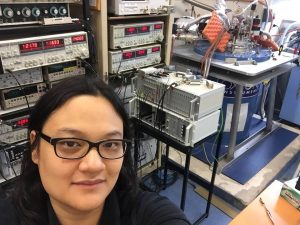Supervisor: A/Prof. Alex Hamilton

The spin-orbit interaction is central to topological insulators, Majorana fermions, and even the formation of artificial topological insulators from conventional semiconductors. The spin-orbit interaction couples the motion of an electron with it’s magnetic dipole moment – essentially generating an effective magnetic field that is proportional to the electron’s momentum. Galllium-Arsenide is the cleanest material system from which to make nanostructure devices, and by using holes instead of electrons to carry the electrical current we are able to combine both ultra-low disorder and strong spin-orbit interaction (this is because electrons come from l=0 atomic orbitals so l.s=0, whereas holes come from l=1 atomic orbitals and l.s is large). Surprisingly the properties of valence band holes in semiconductor nanostructures are not well understood, with a constant stream of new experimental discoveries and theoretical predictions. The aim of this project is to use electron beam lithography techniques to fabricate hole based nanostructure devices, study them at milliKelvin temperatures, and optimise the spin-orbit interaction with the ultimate aim of developing artificial topological insulators.
If you have any questions, see our website at https://www.phys.unsw.edu.au/
Interested applicants must meet UNSW PhD entry requirements. See https://research.unsw.edu.

